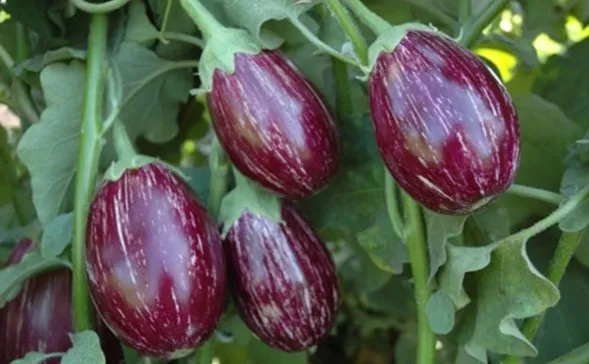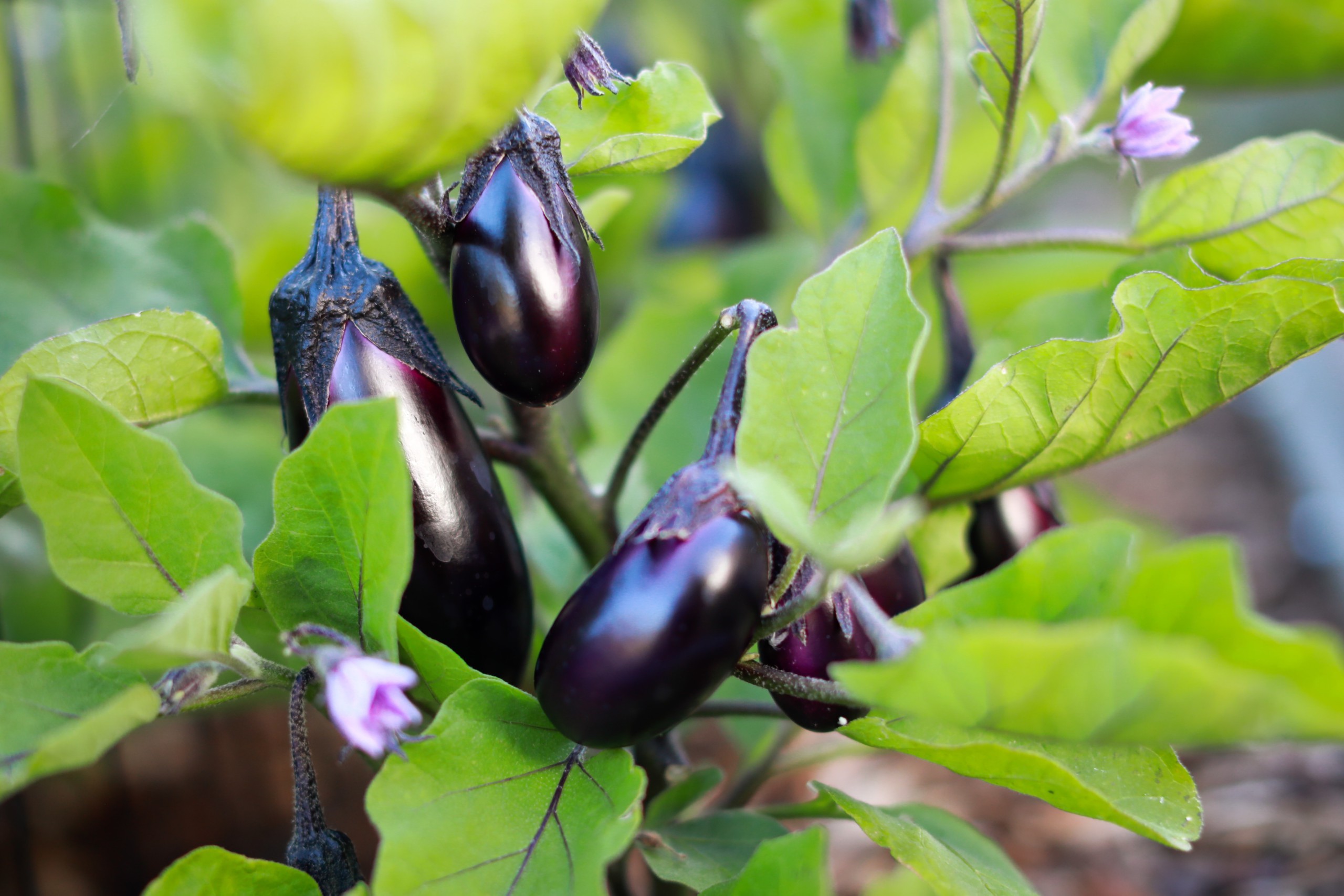Brinjal (Eggplant) Cultivation and Uses...!!!
Brinjal is a versatile and nutritious vegetable that can be easily cultivated and utilized in various ways. Whether enjoyed fresh, pickled, or in skincare products, brinjal offers numerous benefits for health and well-being.

Brinjal Cultivation
Overview: Brinjal, also known as eggplant, is a versatile vegetable that flourishes in tropical and subtropical climates. It is widely cultivated for its edible fruit, which varies in shape, size, and color.
Climate and Soil Requirements
-
Climate: Brinjal thrives in warm temperatures, ideally between 25°C and 30°C during the day and less than 15°C at night. It requires plenty of sunlight, at least 6-8 hours a day.
-
Soil: Well-drained, fertile loam or sandy loam soils with a pH level between 6.0 and 7.0 are ideal. The soil should be rich in organic matter to promote healthy growth.
Land Preparation
-
Tilling: The soil should be deeply tilled and leveled to ensure proper root development. Removing weeds and debris is essential to prevent competition for nutrients.
-
Bed Preparation: Raised beds or ridges can improve drainage and minimize the risk of waterlogging.
Sowing
-
Seed Selection: Choose high-quality seeds with good germination rates. Hybrid varieties are often preferred for their disease resistance and higher yields.
-
Sowing Time: Sowing can be done from February to April for the summer season and from June to August for the monsoon season.
-
Spacing: Seeds should be sown at a depth of 2-3 cm with a spacing of 30-45 cm between plants and 90-120 cm between rows.
Irrigation
-
Watering Frequency: Brinjal needs consistent moisture, especially during the flowering and fruiting stages. Drip irrigation or furrow irrigation systems are ideal for maintaining adequate soil moisture.
-
Avoid Waterlogging: Proper drainage is crucial to prevent root rot and other water-related diseases.
Fertilization
-
Organic Manures: Incorporate well-rotted farmyard manure (FYM) or compost into the soil before planting.
-
Chemical Fertilizers: Apply balanced fertilizers such as NPK (Nitrogen, Phosphorus, Potassium) in recommended doses. Foliar sprays of micronutrients can also boost growth and yield.
Pest and Disease Management
-
Common Pests: Cucumber beetles, aphids, and spider mites are common pests. Use organic insecticides, neem oil, or biological control methods to manage infestations.
-
Diseases: Powdery mildew, downy mildew, and bacterial wilt are prevalent diseases. Crop rotation, proper spacing, and fungicidal sprays help prevent and control these diseases.
Harvesting
-
Harvest Time: Brinjal is typically ready for harvest 50-70 days after sowing. Harvesting should be done when the fruits are young, tender, and uniformly green.
-
Harvesting Technique: Use a sharp knife or scissors to cut the fruit from the vine, leaving a small portion of the stem attached.

Uses of Brinjal
Culinary Uses
-
Salads: Brinjal slices add a unique texture and flavor to salads.
-
Curries: Brinjal is a staple in many Indian curries, such as Baingan Bharta and Baingan Masala.
-
Stir-Fries: Its firm texture makes it ideal for stir-frying with other vegetables and meats.
-
Grilled or Roasted: Brinjal can be grilled or roasted to bring out its natural sweetness.
-
Pickles: Brinjal can be pickled and enjoyed as a tangy condiment.
Nutritional Benefits
-
Low in Calories: Brinjal is low in calories, making it a great choice for weight management.
-
Rich in Nutrients: It contains essential vitamins and minerals, including vitamin K, vitamin C, potassium, and magnesium.
-
Antioxidants: Brinjal is a good source of antioxidants, which help combat oxidative stress and inflammation.
Health Benefits
-
Heart Health: The potassium and fiber in brinjal support heart health by regulating blood pressure and lowering cholesterol levels.
-
Digestive Health: The fiber content aids in digestion and promotes regular bowel movements.
-
Weight Management: Its low-calorie and high-fiber content make it an excellent addition to a weight loss diet.
-
Diabetes Management: Brinjal has a low glycemic index, making it suitable for individuals managing blood sugar levels.
Other Uses
-
Medicinal Uses: Brinjal has been used in traditional medicine to treat liver diseases, cough, rheumatism, and intestinal worms.
-
Household Uses: Brinjal leaves and shoots can be used as fuel or in decorations.
Brinjal is a versatile and nutritious vegetable that can be easily cultivated and utilized in various ways. Whether enjoyed fresh, pickled, or in skincare products, brinjal offers numerous benefits for health and well-being.
What's Your Reaction?
















